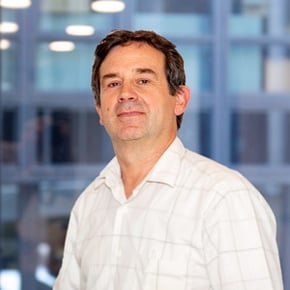
With FX volatility now rising rapidly our three fintech entrepreneurs were planning how to disrupt the Foreign Exchange market (the only financial market that runs for 24 hours per day) with a revolutionary ‘follow-the-sun’ app. They were planning to set up a global, low-cost, transparent, real-time, digital, blockchain exchange staffed by robots.
The American, trumpesque in self-belief, pulled no punches. “We are the world’s largest economy and 90% of all FX volume includes our currency. For everyone’s best interest we should be the base, without us no-one would even log in. Besides, you guys in Europe are falling apart!”
The European was not impressed and was much more measured in response. “Here is why we should be the main centre", he said. "Firstly, we already represent five of the G8 members. Secondly, by the time you wake up we have already taken over the market from Tokyo before steering you on the right track. Our bots will work better and with lower latency if they are close to the liquidity; you do realise London accounts for 37 dollars of every 100 dollars traded. Oh yes and last but not least, we already have more than half of the global FX market – with five of the top ten liquidity providers being European”. The two looked at the Asian confidently and wondering how the arguments of size and speed could possibly be trumped.
However, Asia-Pacific markets lead the others in their share of market timeshare exclusivity, with theirs being the only zone open for a significant ten hours out of twenty four. This is double either of the other two. No coincidence therefore that the three fastest growing FX markets in terms of total share, Tokyo, Hong Kong and Singapore are all in the region.
According to Bloomberg, this year China’s gross domestic product is forecast to reach about $13.2 trillion, overtaking the $12.8 trillion combined total of the 19 countries that use the euro. Its growth rate is triple the rate of the Eurozone. In the next two years the size of Asia’s middle class will exceed that of Europe and America combined. As algo’s become smarter and more microseconds are shaved off robotic decision-making then ‘following the sun’ trading is critical to be located near the origins of changing data. Any delays in transmitting across global electronic networks introduce disadvantage.
The Asian politely thanked the other two, gave them a business card (digital of course) and left the other two to their posturing. “We will wait”.
In 1405 the Chinese admiral, Zheng Hi, commissioned a fleet of 300 ships that included the largest wooden vessels ever built – up to 140m in length and with a displacement in excess of 10,000 tons. After less than thirty years trading across the world the explorations were abruptly ended. Almost eighty years later Christopher Columbus’ set sail with three caravels to connect Europe to America. His largest ship, the Santa Maria, was only a fraction the size of Zheng’s, at only 36m bow to stern and a displacement of a mere 150 tons. Like other famed explorers of his time Columbus’ voyages of discovery were impelled (and funded) by adventure and trade. Zheng was not motivated by trade or conquest. It was decided that there was nothing useful or valuable enough to justify the return on investment in the fleet. China’s customers were already coming to them.
